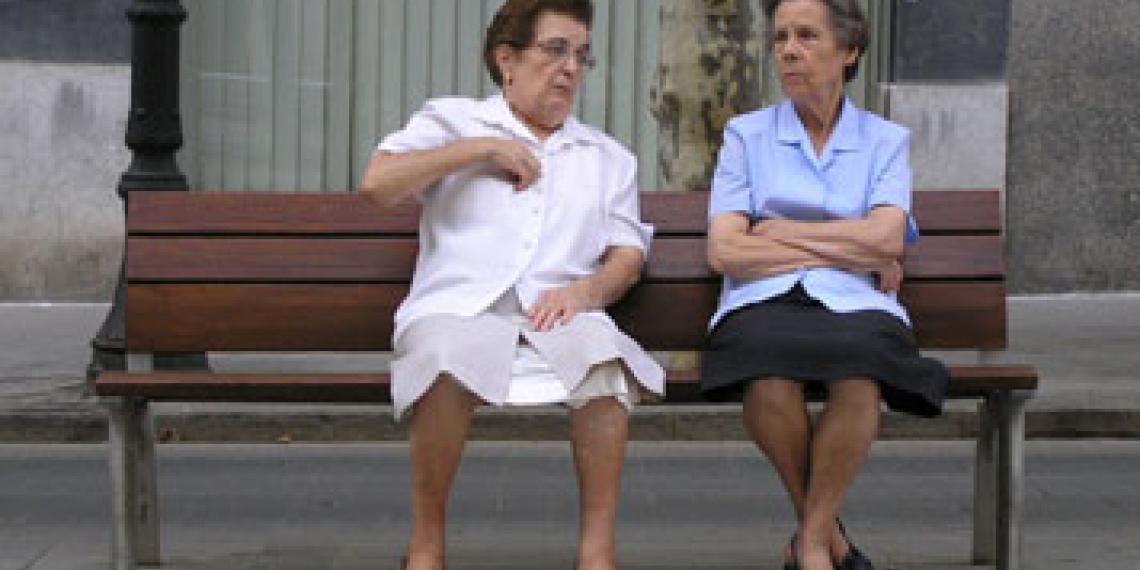You are here
Gendered Ageism - a myth or reality?

It has been said that an older woman faces a double jeopardy; she is a woman and an older one!
Whilst it is a fact that aging affects everyone from birth to death, it is also a reality that many communities perceive this natural progression from weaning to wrinkles with extreme negativity. Stereotyping, prejudice and age discrimination, in our youth-focused world, is prevalent. Moreover, there is evidence to suggest ageism has a predominately feminine face. There is an old Muslim saying that goes:
When a child is born they are surrounded by 100 angels
an angel is added for every year a boy lives
an angel dies for every year a girl lives.
Gendered ageism
Is gendered ageism a modern-day phenomenon? Elizabeth Markson1 commented that looking back in history to many centuries ago, older women were revered for their wisdom and skills; they were known as healers and midwives. ‘The term hag (hagia), she reflected, means “wise woman” and was used at this period of time as a compliment.’
So when did such a positive social construct begin to change? Such transformation, which has seen women move from being perceived as wise and valuable to wrinkly and past it, has much to do with how society began to be organised, with the formation of a predominately patriarchal structure. Markson argues that when researching Greek history and during the time of the early church, women were clearly seen as inferior and judged to be defective males.
Indeed, it was believed that a female birth was due to the father having an illness or being deemed a sinner.
Have perceptions changed?
Moving into the twenty-first century—have such negative perceptions changed? Whilst acknowledging the positive progress made that has seen women, in many parts of the world, competing on a more even playing field with their male counterparts, there is still a great deal of disparity and discrimination, especially in leadership positions where male dominion is still very much the norm. Couple this with age prejudice, and women, in many instances, remain doubly disenfranchised.
Today, both women and men live longer and, by and large, are healthier than their predecessors. Such longevity, though, brings with it challenges for both genders. Whilst by no means a homogenous group, women face a unique set of tests as they move through the decades. Many women living alone progress into older years with less financial stability than their male counterparts. Causal factors for this include a disrupted career due to raising children, being clustered in lower-paid jobs, the continuing inequality of sexes in the leadership roles, and the dissolution or death of a partnership. Couple these factors with a culture that extols feminine youthfulness and the ‘feminisation of poverty’ is set to continue rising.
What steps will be needed to help counteract this? One possible step for some women will be access to continuing employment, yet this too is fraught with difficulties.
A recent study2 researched the interaction between mature female job-seekers (aged 45 years and up) and private employment agencies in the Auckland region. Two emerging themes from the resultant data highlighted the difficult relationship between female job-seekers and consultants, and the importance of ‘appearance’.
One woman respondent explained, ‘On the telephone I can sound animated and I would often get called in for jobs, and then they would see me, and not that I looked bad, but I look my age, and they instantly weren’t interested. They’re (the agencies) run by young, upwardly-mobile, stunning young women. They wanted a younger person that looked like them’.
Adopting a counter-cultural approach
According to John Macnicol3, ageism arises from our own ‘deep rooted, irrational, subconscious fears of our own aging, and our apprehension at the prospect of impending physical and mental decay.’
Gendered ageism is a fact and is prevalent throughout our society; it is portrayed through a media that spotlights youth and beauty, it is present within workplace ideologies and evident in pews where leadership cry, ‘We have a problem, our congregation is getting older!’
Our challenge then, should we choose to accept it, is to adopt a counter-cultural approach that welcomes, accepts and, indeed, rejoices in the diversity of God’s people here on our global home and seeks every opportunity to support and encourage both genders to continue to reach their full potential throughout their lives.
By Chris Frazer (from SPPU)
1 Elizabeth Markson, Director, Gerontology Centre, Boston University.
2 Massey University, ‘Gendered Ageism and Employment Agency Practises’.
3 Macnicol, John, ‘Age Discrimination, a Historical and Contemporary Analysis’.